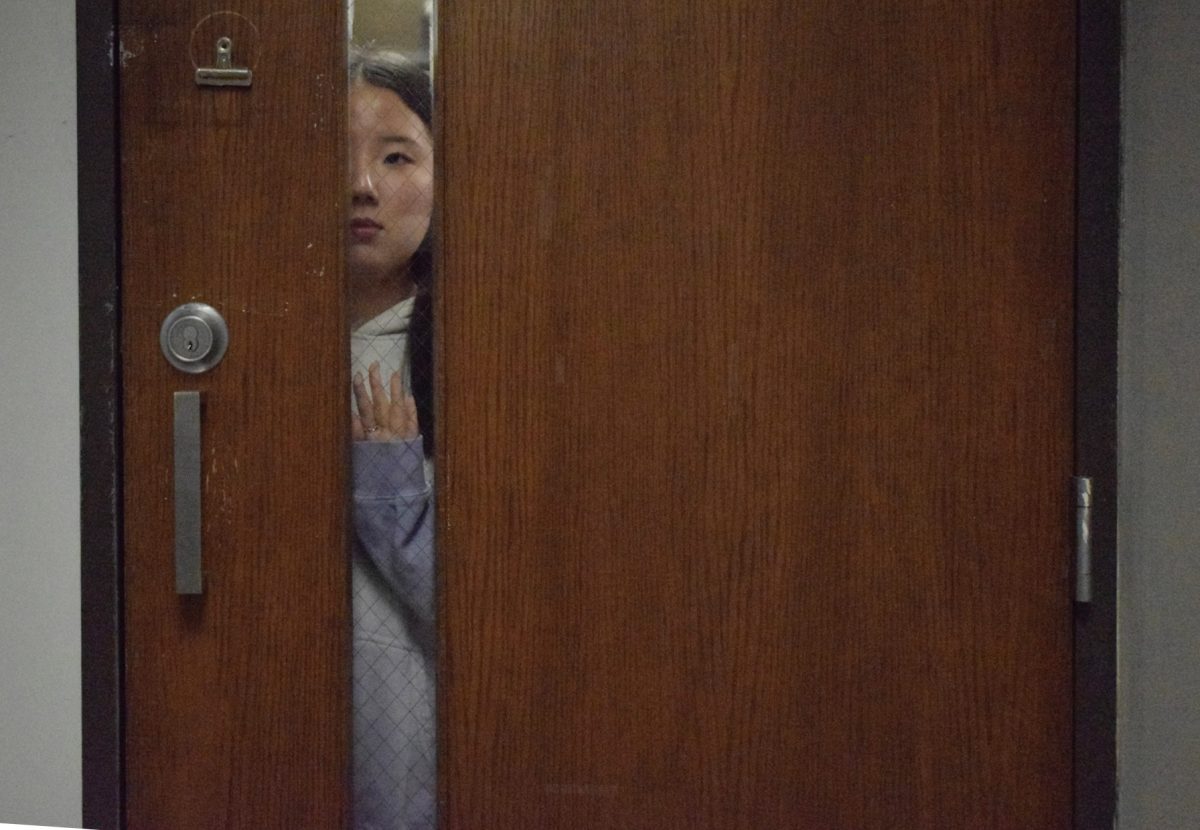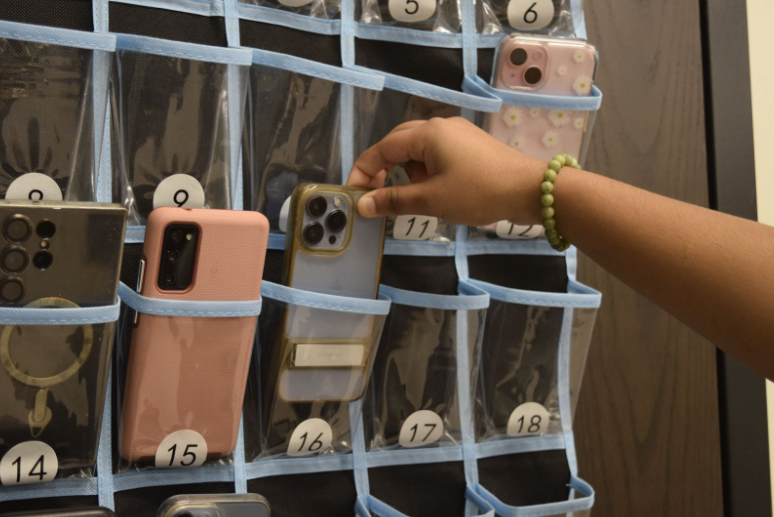Background
Students traversing the hallways of West High — with a hall pass, of course — are liable to see a new sight this school year. One of our school’s many subject wings will be packed with teachers meeting and planning classes during the day, with nary a student in sight.
This unusual occurrence reflects a change in scheduling enacted this year. Freshman class principal Mario Pupillo played a role in the decision to bring back a West High policy predating the COVID-19 pandemic: aligning the plan periods of teachers who teach the same subject.
“Part of the professional development that teachers do [is] PLCs, or professional learning communities, where they work in collaborative teams,” Pupillo said. “Our teachers do that on early release days when [students] aren’t here. Pre-COVID, we used to make sure that teachers that were in PLCs together had common plan times. [They were] smaller groups [of] three [or] four people. We got away from it during COVID and we had not gone back to it yet.”
While similar to the old plan-time policy, the new standard in scheduling is more ambitious; instead of just a few, all teachers in each department have aligned plan periods. The result is a significant change in the structure of our school schedule — for better or worse.
PRO
Aligning plan periods brings many benefits to the educators who keep this school running. Teachers are given a broader range of opportunities to utilize their plan time: holding department meetings, brainstorming ideas for their classes, and collaborating with professional peers. As the social studies department chair, history teacher Jeffrey Chazen is attuned to the effects of plan time alteration.
“[This structure] allows teachers that teach common courses to work together and to facilitate more team teaching,” Chazen said. “Once we start testing, we [will] start digging into the data of how our students are doing and looking at ways that we can improve.”
Increased collaboration between teachers was a primary motivation behind the schedule change. Creating the ability for teachers to coordinate is a priority of Pupillo’s, especially since so many core classes build off of each other.
“We want to be as collaborative of a staff as we can be,” Pupillo said. “[We] want to work together. [Any] teacher that’s teaching [a prerequisite] course wants to make sure they’re doing the right things to get ready for the next course.”
Not only does the new system bring many benefits, Pupillo believes its drawbacks are limited. The schedule was tested to see if students could still get classes, and the impacts weren’t significant enough to impact decision-making.
“The big question I had in mind when I started was, are we going to be able to do this and keep a solid schedule? It really didn’t limit us in any way,” Pupillo said.
Students who had a harder time getting the classes they wanted this year shouldn’t jump to blaming the way the schedule was created. Counselor Jen Wibbenmeyer attests that there may be other contributing factors.
“We base the master schedule on what kids put in in the spring, and when they don’t take that seriously, or when they change their mind, there’s not room in all these other classes to make some of the switches,” Wibbenmeyer said. “The amount of students wanting to switch schedules has stayed the same. Their ability to get them changed has declined.”
CON
Though it helps teachers collaborate, the impact of the new system on students is questionable. After the alignment of subject plan periods in the schedule, some students have found it unusually difficult to get the classes they signed up for. Having entire subjects blocked off during certain hours could have limited students’ scheduling freedom indirectly. For instance, a student who needs an English credit would have more flexibility if English classes were offered at more times of the day. With a period blocked off in every department for collaborative planning, students can only earn certain types of credits at certain times.
The rush to alter schedules also created a hectic atmosphere during open hours, a time set aside before the school year for students to meet with a counselor and alter their schedule without making an appointment. As the second year of this system, the chaos around schedule switching has markedly increased. The effects on students include raising levels of stress and compromising courses that are important to the individual.
“I signed up for Fashion, Apparel and [Housing] Design, and I was [assigned] Medical Science instead,” senior Sydney Etchason said. “I don’t need or want Medical Science for the future. Having to change out of [it] stressed me out; I didn’t know what class I was going to have to take to get rid of it.”
With a surplus of students, like Etchason, attempting to change their schedules, waiting times to secure appointments with counselors began to increase.
“[I had] to come into the counseling office [to fix my schedule],” Etchason said. “I waited for an hour before I was able to talk to a counselor and get a few things moved around.”
Wibbenmeyer was partially responsible for handling the flood of people who streamed in during open hours, noting a heightened difference in class availability.
“Students are coming to find that switching their [classes] around [is] getting harder and harder,” Wibbenmeyer said.
Altering teachers’ plan time has backfired for Parkway West in the past, too. With increased scheduling chaos after yet another change, perhaps the powers that be in scheduling should take a cue from the great Paul McCartney and “let it be.”

![Senior Griffin Beno waits in the counseling hub. Students were allowed to visit counselors without an appointment on Aug. 15 and 16 to adjust their schedules, resulting in long wait times. “There [were] not as many [people at open hours last year], but I think that was because we didn't get the word out as well,” counselor Jen Wibbenmeyer said.](https://pwestpathfinder.com/wp-content/uploads/2024/09/Screenshot-2024-09-17-8.20.51-AM.png)

![Junior Fiona Dye lifts weights in Strength and Conditioning. Now that the Trump administration has instituted policies such as AI deregulation, tariffs and university funding freezes, women may have to work twice as hard to get half as far. "[Trump] wants America to be more divided; he wants to inspire hatred in people,” feminist club member and junior Clara Lazarini said.](https://pwestpathfinder.com/wp-content/uploads/2025/05/Flag.png)
![As the Trump administration cracks down on immigration, it scapegoats many immigrants for the United States’ plights, precipitating a possible genocide. Sophomore Annabella Whiteley moved from the United Kingdom when she was eight. “It’s pretty scary because I’m on a visa. When my visa expires next year, I’m not sure what’s going to happen, especially with [immigration] policies up in the air, so it is a concern for my family,” Whiteley said.](https://pwestpathfinder.com/wp-content/uploads/2025/05/DSC_0077-7copy.jpg)
![Shifting global trade, President Donald Trump’s tariffs are raising concerns about economic stability for the U.S. and other countries alike. “[The tariffs are] going to pose a distinct challenge to the U.S. economy and a challenge to the global economy on the whole because it's going to greatly upset who trades with who and where resources and products are going to come from,” social studies teacher Melvin Trotier said.](https://pwestpathfinder.com/wp-content/uploads/2025/05/MDB_3456-1200x800.jpg)



![Some of the most deadly instances of gun violence have occurred in schools, communities and other ‘safe spaces’ for students. These uncontrolled settings give way to the need for gun regulation, including background and mental health checks. “Gun control comes about with more laws, but there are a lot of guns out there that people could obtain illegally. What is a solution that would get the illegal guns off the street? We have yet to find [one],” social studies teacher Nancy Sachtlaben said.](https://pwestpathfinder.com/wp-content/uploads/2025/01/DSC_5122-1200x800.jpg)


![Making up a large portion of the film industry, many popular movie remakes and sequels have been released recently. Similar to film remakes, theater teacher Amie Gosset often uses play adaptations of famous movies for theater productions. “It’s challenging because people have an idea of what the film is, whether it’s an iconic film or one they really liked. [Consumers] come in with a preconceived notion of how the [film] should be. Then, [they] are either surprised because they like the new version or disappointed because it’s not what they’re used to.”](https://pwestpathfinder.com/wp-content/uploads/2024/12/DSC_0042-1200x801.jpg)
![Sophomore Aleix Pi de Cabanyes Navarro (left) finishes up a soccer game while junior Ava Muench (right) warms up for cross country practice. The two came to Parkway West High School as exchange students for the 2025-2026 school year. “The goal for the [exchange] program is to provide opportunities for both Parkway students and our international exchange students to learn about other cultures, build connections and become confident, capable, curious and caring — Parkway’s Four C’s — in the process,” Exchange Program Lead Lauren Farrelly said.](https://pwestpathfinder.com/wp-content/uploads/2025/10/Feature-Photo-1200x800.png)
![Leaning on the podium, superintendent Melissa Schneider speaks to Parkway journalism students during a press conference. Schneider joined Parkway in July after working in the Thompson School District in Colorado. “My plan [to bond with students] is to get things on my calendar as much as possible. For example, being in [classes] is very special to me. I am trying to be opportunistic [meeting] kids [and] being in [the school] buildings. I have all the sports schedules and the fine arts schedules on my calendar, so that when I'm available, I can get to them,” Schneider said.](https://pwestpathfinder.com/wp-content/uploads/2025/09/IMG_5425-1200x943.jpeg)
![Gazing across the stage, sophomore Alexis Monteleone performs in the school theater. The Monteleone family’s band “Monte and the Machine” has been releasing music since 2012, but Alexis started her own solo career in 2024 with the release of her first single, Crying Skies. “My whole family is very musical, [and I especially] love writing [songs with them],” Monteleone said.](https://pwestpathfinder.com/wp-content/uploads/2025/09/DSC7463-1200x798.jpg)

![Leaping through the air, senior Tyler Watts celebrates his first goal of the season, which put the Longhorns up 1-0 against the Lafayette Lancers. Watts decided to play soccer for West for his last year of high school and secured a spot on the varsity roster. “[Playing soccer for West] is something I had always dreamed of, but hadn’t really had a good opportunity to do until now. It’s [really] fun being out [on the field], and I’m glad I decided to join the team. It’s just all about having fun with the boys and enjoying what time we have left together,” Watts said.](https://pwestpathfinder.com/wp-content/uploads/2025/09/DSC_1951-1200x855.jpg)


![Pitching the ball on Apr. 14, senior Henry Wild and his team play against Belleville East. Wild was named scholar athlete of the year by St. Louis Post-Dispatch after maintaining a high cumulative GPA and staying involved with athletics for all of high school. “It’s an amazing honor. I feel very blessed to have the opportunity to represent my school [and] what [it] stands for,” Wild said.](https://pwestpathfinder.com/wp-content/uploads/2025/05/unnamed-6-1200x714.jpg)
![Red, white and blue, the American flag holds the values of our democracy. The fight that we once endured has returned, as student journalists and senior correspondents across the country are losing their voices due to government control. “[Are] the White House and [the] government limiting free speech [and] freedom of the press? Yes [they are],” chief communications officer of the Parkway School District and former journalist Elisa Tomich said.](https://pwestpathfinder.com/wp-content/uploads/2025/03/Untitled-design-14.jpg)
![Freezing in their position, the Addams Family cast hits the “rigor mortis” pose after cast member and senior Jack Mullen, in character as Gomez Addams, calls out the stiff death move. For the past four months, the combined company of cast members, orchestra pit, crew and directors all worked to create the familial chemistry of the show. “I’m excited for [the audience] to see the numbers, the music, the scenes, but I also just love all the technical aspects of it. The whole spectacle, the costumes, makeup and the people that put in the work backstage in order to make the show successful on stage. I’m excited for people to see and appreciate that,” Mullen said.](https://pwestpathfinder.com/wp-content/uploads/2025/03/DSC0116-1200x800.jpg)
